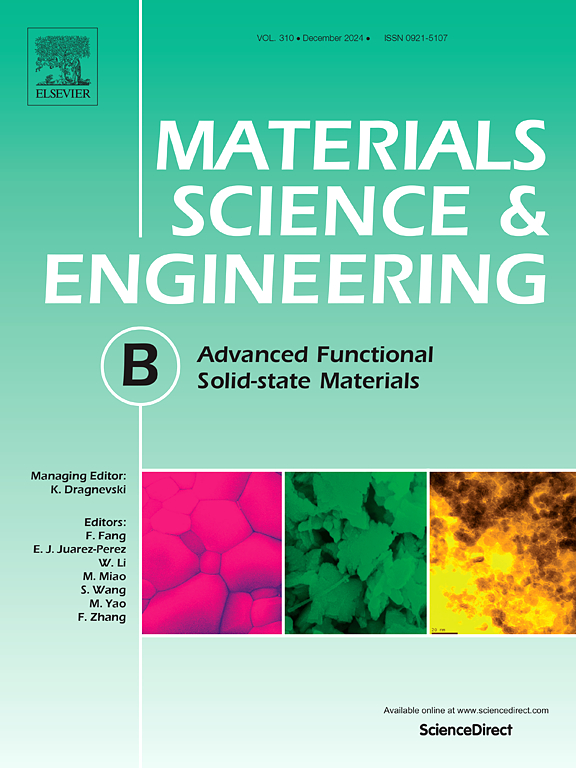Synthesis of barium titanate nanocrystals decorated with PtO for enhanced photooxidative desulfurization of thiophene
IF 3.9
3区 材料科学
Q2 MATERIALS SCIENCE, MULTIDISCIPLINARY
引用次数: 0
Abstract
Perovskite titanates have emerged as promising photocatalysts for environmental remediation. One particular challenge is the removing of sulfur-containing compounds like thiophene (TPH) from fuels. Herein, we synthesized mesoporous BaTiO3 (BTO) nanostructures using a surfactant-assisted hydrothermal method and subsequently modified with varying amounts (0.5–2.0 wt%) of PtO nanoparticles (NPs) to form PtO-BTO composites. The characterization of the composite materials reveals a mesoporous structure that enhances their optical properties after adding PtO NPs. Specifically, incorporating 1.5 wt% PtO significantly reduced the bandgap energy (Eg) from 2.68 to 1.93 eV, leading to improved visible light absorption. This composite demonstrated superior photocatalytic performance, achieving complete photooxidative desulfurization of TPH during 90 min under visible light irradiation, with a remarkable oxidation rate constant of 0.035 min−1. Moreover, the photocatalyst exhibited excellent recyclability. Photoluminescence and photocurrent measurements confirmed that the introduction of PtO effectively suppressed charge carrier recombination. The proposed photoconversion mechanism involves a step-scheme charge transfer process facilitated by the heterojunction between PtO and BTO. This mechanism enables effective charge isolation and transfer, resulting in increased photocatalytic activity. This research accentuates the potential of BaTiO3-based photocatalysts for use in fuel processing and corresponding industries.

求助全文
约1分钟内获得全文
求助全文
来源期刊

Materials Science and Engineering: B
工程技术-材料科学:综合
CiteScore
5.60
自引率
2.80%
发文量
481
审稿时长
3.5 months
期刊介绍:
The journal provides an international medium for the publication of theoretical and experimental studies and reviews related to the electronic, electrochemical, ionic, magnetic, optical, and biosensing properties of solid state materials in bulk, thin film and particulate forms. Papers dealing with synthesis, processing, characterization, structure, physical properties and computational aspects of nano-crystalline, crystalline, amorphous and glassy forms of ceramics, semiconductors, layered insertion compounds, low-dimensional compounds and systems, fast-ion conductors, polymers and dielectrics are viewed as suitable for publication. Articles focused on nano-structured aspects of these advanced solid-state materials will also be considered suitable.
 求助内容:
求助内容: 应助结果提醒方式:
应助结果提醒方式:


